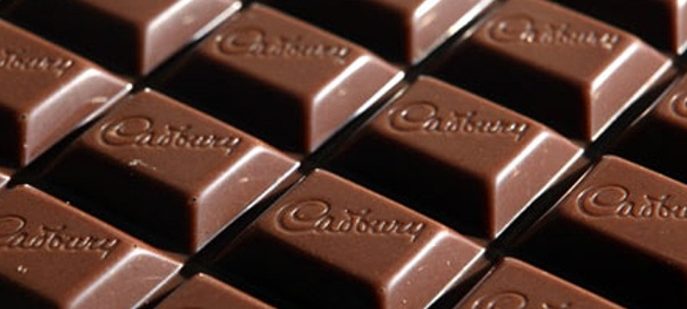For some weeks now, Cadbury Dairy Milk is splurging its marketing rupees on a commercial featuring the fetching Mawra Hocane and the seasoned maestro Javed Sheikh, and the clip is dominating the waves on all news and entertainment channels. With the copy centering on the daughter’s wedding and her last moments together spent in accompaniment with her father along with Cadbury indeed touched many a chord with the audiences.
The proof positive is the manner the commercial was lapped up on the social media: 16,000-plus shares and 16 million and still counting Pakistani followers pressing the Like button on the Facebook.
This sensational success of the advert on social media can arguably be attributed to the proactiveness of its target audience, the teenage and slighter older lot – not just the largest consumer segment of Cadbury but also around two thirds of the Facebook users from the country.
This very consumer segment has perhaps motivated the makers of Cadbury Dairy Milk, Mondelēz Pakistan to expand their footprint in these parts – more than 120 million under-25 that are behind the changing trends of Pakistan’s snacking industry.
In an interview with Profit, Usman Muneer, Managing Director (MD) Mondelēz Pakistan, shed light on the progress of Mondelēz Pakistan – a subsidiary of Mondelēz International previously known as Kraft Foods, sharing the roadmap through which Cadbury Chocolates and Tang wants to further extend its over $30 million investment here.
“Previously specialising in candies, our chocolate portfolio came to Pakistan in the late 1990s,” said Muneer.
Until then candies were all the rage. It was with the advent of brands like Cadbury and others in the late 1990s that Pakistani consumers started evolving the taste for chocolates.
Though Cadbury holds the most powerful position today among the chocolate producers in the country, Mondelēz’s also produces Bubbly, Marvelous Creations, Perk, 5 Star and Trident Gums indicate that the company has expanded its portfolio to cater to all pocket books just as the demand picked pace.

“The Pakistani market has evolved; it was primarily a candy market with chocolates not having a sizable footprint here. Growing up as chocolate producers in the late 1980s, our chocolates were indeed basic,” said Muneer.
“Salty snacks have always had a large presence but amongst the sweet snacks, candies were the main thing. Now it’s more chocolates and biscuits – the latter have always been there though,” said Muneer. In a nutshell, Muneer’s estimates aptly describe Pakistan’s $1.2 billion snacking industry, neatly shared 65-35 by salty and sweet respectively.
But, on the back of shift from candies to chocolates, has the market really evolved? Muneer doesn’t think so.
Ever-evolving market
“The market has evolved on taste [too] but people are now spending a lot more on snacks than they used to,” said Muneer, portraying the changing market dynamics.
The logical follow-up question is: Why are the consumers spending more on snacks now?
The answer though was staring one in the face – the 60% youth.
“The younger people have a whole lot more disposable cash that is going into treating themselves with gums and snacks etc. From our vantage point, we have seen that the younger lot do not spend more now just on snacks but everything,” explained the Mondelēz managing director. “This is called ‘fun money’ or impulse purchase,” he added.

Chocolate is not the only Mondelēz Pakistan product category firmly on the growth track. Changing patterns in consumer spending have also meant that its pungent powdered drink, Tang, has more or less equally gained popularity since its launch here 10 years ago.
“Tang has a heritage here,” said Muneer, adding, “People used to bring big tubs of Tang from the Gulf but our business exploded when we launched sachets and single servings in the country.” With the product now available to downscale market, the demand propelled overnight. The initiative is paying dividend to the company till now, with sachets remaining one of the largest selling among the Tang category.
Another unique selling point for Tang was its being the pioneer of powdered drinks in Pakistan, previously squashes or liquid syrups holding sway amongst the non-carbonated drinks.
So what segment has driven Tang’s popularity in a nation that imbibes carbonated drinks with such relish that 75% root for these among beverages? Quite unlike chocolates, above-25 women are driving Tang sales. No wonder, the campaigns focus on mother and child bonding through the easily-mixed rich-in-taste concoction.
There’s yet another distinction between the two customer bases that Mondelēz Pakistan has identified: the economic groups of A, B and C are all Tang patrons while its chocolate portfolio draws sales from amongst the high-income upscale bracket.
Non-carbonated drinks have a mere 25% toehold in the beverage market, and here Tang predominates. The products that Mondelēz Pakistan reckons to be Tang’s competitors are all syrups and squashes.
But as a suave businessman, Muneer appreciates that Tang cannot grow without eating into the market share of carbonated drinks. So, that is slated as broad competition.

In wanting more people to consume the powder drinks category, Muneer said that Mondelēz Pakistan does not mind new entrants and more competition, as long as it expands the market against major players in the liquid or carbonated drinks segment.
10 times in 20 years
Nonetheless Tang and Cadbury – the two entirely different products – have provided a spur to the company, enlarging its business size by 10 times since its launch some 20 years ago, in the process each registering 5-10% growth year-on-year.
Yet Muneer believes the growth can be much more. But how?
‘We see Pakistan as an opportunity because of three reasons… Firstly, brands do not have as much penetration as the population so there’s an opportunity for further penetration; secondly, the affluent middle class is growing rapidly; thirdly, there’s greater awareness about [global] brands now because of social media.’, young people are catching up all the trends from social media and we believe whatever has already happened globally is going to happen here now,” said Muneer, talking about the ever-changing dynamics.
“Affluent class knew about brands before too but now middle and lower middle class know all global brands because of their mobile phones,” he said.
For this very reason, Mondelēz Pakistan’s objective is to double the business penetration of both its confectionery and powdered drinks in the next three to five years. According to the managing director, this is quite bold for an aim, given that internationally businesses only grow at one-two percent every year but considering the potential of growth in Pakistan, the company aims high.

“These factors demonstrate that a company should invest in a growing market,” said Muneer.
If what Usman Muneer and the international parent company pull off their growth plans, it will not only benefit the company but also make the Pakistan government richer, for it realised $16.5 million in taxes from Mondelēz Pakistan in the previous fiscal.
And it would also translate into sizable new investment in its two plants at Hub for both Tang and confectionery category. The company’s recent investment in tripling the number of chillers countrywide added 700-plus direct employees in plants and head offices.
The only concern Muneer and Mondelēz Pakistan has is the lack of intellectual property safety due to which the business suffers against counterfeit products locally.
“Pakistan is a great place to do business. The scope of doing business in Pakistan cannot be found anywhere else but implementation of laws is very important,” said Muneer.
“‘There should be one federal food standard which everybody must follow. And if sense of security is given to foreign investors, it will be an incentive for investors as people actually want to invest in Pakistan,” said the managing director.





